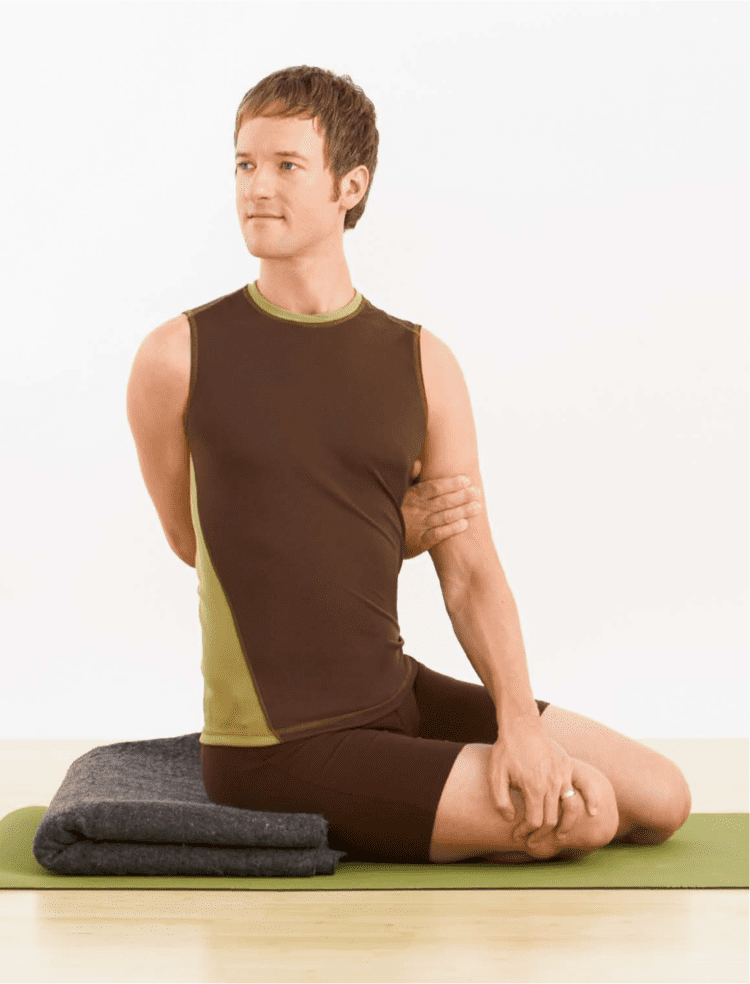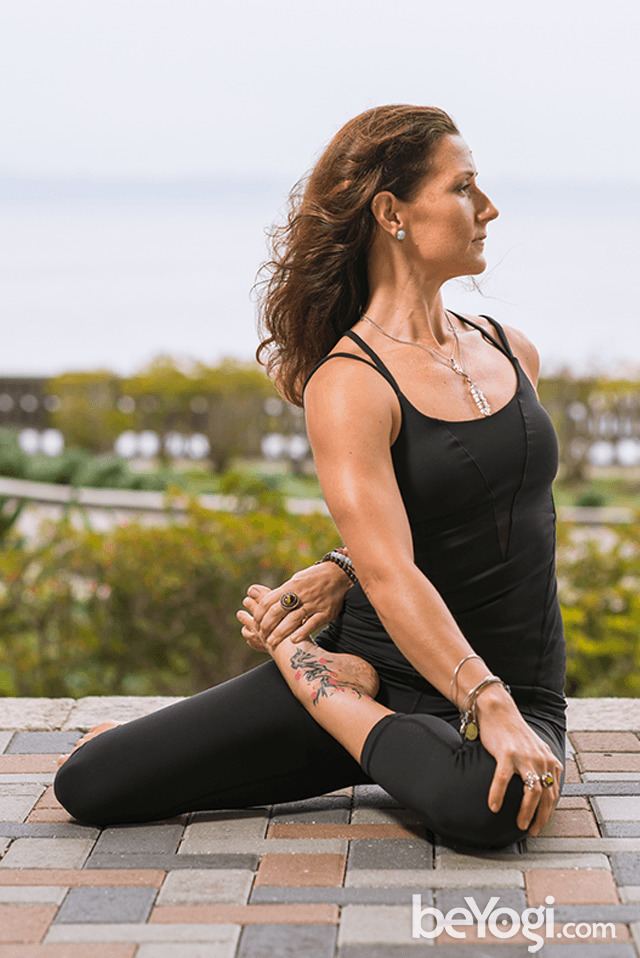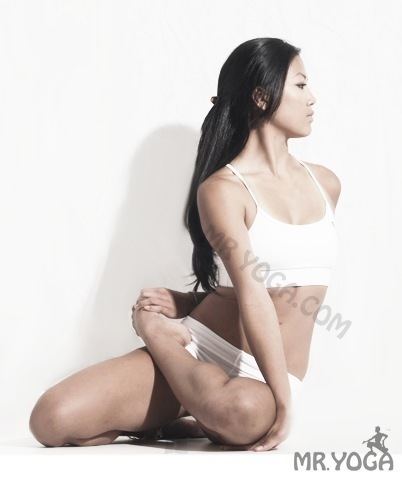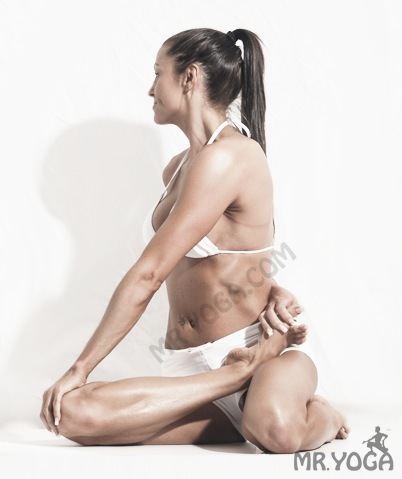English name(s) Bharadvaja's twist Asana type Sitting Asana Pose type Seated, Hip opener, Twist | Sanskrit Sanskrit: भरद्वाजासन Strengthens Lower back | |
 | ||
Pronunciation IPA: [bʱɐrɐd̪ʋɑːɟɑːsɐnɐ] Meaning asana dedicated to the sage Bharadvāja dṛṣṭi (eye focus) Pārśvadṛṣṭi dṛṣṭi (to the side) Note Consult a doctor before beginning an exercise regime Stretches Shoulder, Vertebral column, Hip Preparatory poses Baddha Koṇāsana, Trikonasana, Virasana, Vriksasana, Virabhadrasana II, Supta Padangusthasana Follow-up poses Uttanasana, Baddha Koṇāsana, Trikonasana Similar Baddha Koṇāsana, Virasana, Half Lord of the Fishes Pose ‑ Ar, Trikonasana, Dandasana | ||
Bharadvajasana ([bʱɐrɐd̪ʋɑːɟɑːsɐnɐ]; Sanskrit: भरद्वाजासन; IAST: Bharadvājāsana) is an āsana.
Contents
Etymology

The asana dedicated to sage Bharadvāja who was one of the Saptarshis (Seven Great Sages Rishi) in the present Manvantara; the others being Atri, Vashishtha, Vishvamitra, Gautama, Jamadagni and Kashyapa. Bharadvāja was also the father of Drona who was a master of advanced military arts and the royal guru to Kauravas, Pandavas and the Devastras., the princes who fought the great war which is the subject of the Mahābhārata.
Description
Bharadvājāsana is a basic seated spinal twist. It has three main variations:

The vinyasa for Bharadvājāsana I begins in dandasana from which,
- The legs are bent at the knees, dropping them to the left, bringing the feet to the right hip.
- The right foot end top down on the floor and cradling the left ankle within the arch of the right foot.
- The torso is rotated 45° to the left.
- The right arm is straightened and the hand is inserted under the left knee.
- The legs are released, returning to dandasana for a few moments to release the knees.
- Repeat on the left side.
Anatomy
The main action in Bharadvājāsana is spinal rotation towards the leg which articulated as in the Vīrāsana

During a twist the torso is rotated right using the action of pair of muscles acting in synergy such as left external oblique and right internal oblique which work while the right external oblique and left internal oblique are stretched. Thus the ability to perform the twist depends both on the strength of the obliques and their ability to stretch, which can restrict the rotation. If ujjayi breath technique is employed all the following muscles can be recruited for spinal twisting motion.

In Bharadvājāsana, a typical practitioner should expect 5° of rotation in the lumbar spine (yellow); 35° in the thoracic spine (indigo) and 50° in the cervical spine (red). These add up to 90° of spinal rotation between hips and head which may be reached in this twist. However just trunk rotation has 26 articulation points and if any have a reduced range of motion the others will be forced to over-compensate which is the risk factor contributing to injury in yoga twists.
Reduced mobility in the hips will necessitate some spinal flexion (leaning forward). In all but the tightest of hip this can usually be compensated by sitting on a supporting wedge which allows to a cleaner twisting motion without forward flextion. If a wedge cannot compensate then Bharadvājāsana, should be performed sitting on a chair.
Adjustments
To help ground the buttock on the side opposite the twist (e.g. when twisting right the left buttock may cause the spine to more out of alignment). The adjuster standing on the student's left side should place the left foot on the top of the student's left thigh with the inner edge of the foot in the hip crease and gently apply pressure. As the student exhales moving into the twist the top left thigh should relax away from the adjusting foot. The adjuster can reach and place fingers on both shoulders to help the student find the correct alignment of the shoulders through moving back and opening the chest.
Cautions
For correct spinal alignment it is necessary that both buttocks be in contact with the floor. If the twisting causes one to tilt onto the buttock on the tilting side, a folded mat should be placed under the other buttock to allow one to relax with both buttocks on the floor.
If one slouches, the spine is not kept straight and the twist will be far less effective.
